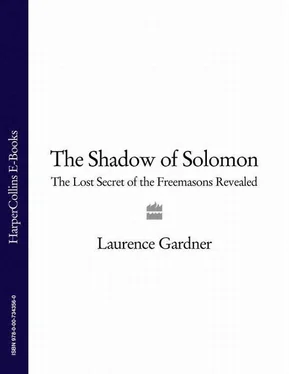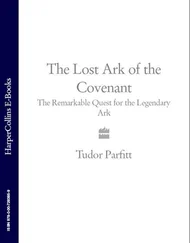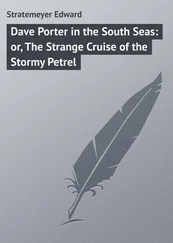Subsequently, the long-standing Habeas Corpus Act was suspended by prime minister William Pitt (the Younger) in 1794, so that citizens could be kept in prison indefinitely without need for trial. Following Pitt’s Unlawful Oaths Act of 1797, Government spies roamed the country, bringing in anyone who belonged to a workers’ group that Westminster deemed seditious, and they were duly sentenced without a hearing. (It was under the terms of this Act that the Tolpuddle Martyrs of Dorset were arrested long afterwards in 1834, and charged at the Dorchester Assizes with ‘administering unlawful pledges of loyalty’.) Even the Royal Navy did not escape the harsh judgements in 1797. Most sailors were pressganged into service, only to be treated abominably with miserable pay and conditions. But when seamen of the Fleet at Nore (near Sheerness) demonstrated for a revised ship-board policy and a grant of two meals a day instead of one, their leaders were hanged. 24At this time, Britain was in a desperate position; France had conquered the Netherlands, and controlled the Dutch Fleet. France had also made an alliance with Spain, and practically controlled the Spanish Fleet.
Then, within a general stirring of public unrest, Pitt made it unlawful to speak, write or to have any opinion against the Government. He sent German troops into Ireland in 1797, prompting an Irish rebellion in the following year, which led to the arrest and death of the prominent leader Lord Edward Fitzgerald. Pitt then introduced the Unlawful Societies Act in 1799, whereupon workers’ groups and unlicensed public meetings of any kind were forbidden anywhere in Britain. The coming together of men into any form of club or society for negotiation of improved working conditions or wages was henceforth defined as a punishable conspiracy. In fact, any organization which held secretive meetings came under the wrap of this Act which, potentially, could have closed all the masonic lodges. Given the royal patronage that applied, however, Pitt was pressured and obliged to relent in favour of Grand Lodge so that Freemasonry was made uniquely exempt from the law. 25
One of the Duke of Kent’s brothers was Prince Augustus, Duke of Sussex, who (despite his Hanoverian status) married twice into Jacobite families. He was first married in Rome to Lady Augusta Murray, daughter of the 4th Earl of Dunmore, on 4 April 1793. But this marriage was formally annulled in the following year because it had not been sanctioned by King George III, and therefore contravened the Royal Marriages Act of 1772. Much later, Augustus married Lady Celia Saunders, daughter of the 2nd Earl of Arran, on 2 May 1831. She was granted the style Duchess of Inverness, but the marriage was similarly deemed to be in breach of the Act. 26However, in 1793 (the year of his first marriage) Augustus had resigned his right of succession to the British Crown, and pursued his own course irrespective of the restrictive Hanoverian statute.
In 1812, Sussex was installed as Grand Master of the Supreme Grand and Royal Conclave, but in the following year, with the Antients and Moderns finally amalgamated, he was also invited to become Grand Master of the new United Grand Lodge, which did not condone the higher degrees of the Conclave. This placed the Duke in a difficult situation, but he decided to accept the office and ride out the storm. In addition to that (and following some heated disputes about who had rights of supreme authority over the masons in France), Augustus was afforded another position in 1819, when selected to head the French Supreme Council in Britain. 27This greatly appealed to him because, in contrast to Dunkerley’s pseudo-Grand Conclave, it was a Templar-style institution with its roots in the exiled Stuart Rite, and would grant him the high-degree patent in Britain.
By virtue of his family ruining his first marriage, Augustus was rather more inclined towards Stuart than Hanoverian sympathy, and so he accepted the nomination. The trouble was that he could not tell his masonic colleagues in England about the plan, and therefore had his masonic secretary make the arrangements. This man was Joseph Hippolyte da Costa, the Portuguese mason who had been extricated by his English friends from papal custody, and who wrote about the Dionysian Artificers ( see page 34). In the event, the office proved to be a title without a function because there was nothing the Duke could do to further his appointment without making his French collaboration known.
From this somewhat egotistical masonic era of Grand Councils and Supreme Conclaves, comes an intriguing and very ordinary sounding name, listed among all the aristocrats and royalty. It appears in the 1845 Statutes of the Temple by authority of the Grand Conclave in Scotland which states that in 1808 a certain ‘Mr Alexander Deuchar was elected Commander of the Edinburgh Templars’. These are the Statutes of a pseudo-Templar Conclave in Scotland that had a serious effect on the relationship between English and Irish Freemasons before and after the amalgamation of the Ancients and Moderns.
Alexander Deuchar was a seal-engraver who became aware of the possibility of a French Templar Council being instituted in Britain long before the offer to head such a body was made to Duke Augustus. The background negotiations had begun when the French Council was itself formed in 1804. Major Müller of the 1st Royal Foot had the ear of the Duke’s brother, Prince Edward, Duke of Kent, and Deuchar conspired with Müller to approach Edward for a Charter of Dispensation to establish an anti-Jacobite Templar authority in Scotland.
Deuchar’s brother, David, was an officer in the Peninsula War (Britain against France in Portugal, 1808-14) and, during the campaign at Leira in Portugal, he stole the altar cross from a Templar chapel in the Castle of Tomar in order to aid his brother’s endeavour. In the old days, the Deuchars had served Scotland well and, from the time of Bannockburn (24 June 1314) and beyond, the Great Sword of Deuchar, with its family coat-of-arms, was a welcome sight on any battlefield. By 1745, however, the table had turned, and the Deuchar allegiance swayed, so that Lyon of East Ogil (a Jacobite supporter of Charles Edward Stuart) made it his business to carry off the prized heirloom. The sword was, nevertheless, retrieved after Culloden, to be held by the Hanoverian supporter Alexander Deuchar when he began his discussions with the Duke of Kent.
Seeing his opportunity to get a firm Hanoverian foothold in Scotland, the Duke agreed to Deuchar’s request, and the new establishment became known as the Scottish Conclave, with Deuchar as its Grand Master. However, the Duke of Kent asserted that the English Masonic rules must be followed, and that he would himself be the Royal Grand Patron of the Conclave established ‘in that part of Great Britain called Scotland’. Not surprisingly, within a few decades influential Whigs were allowed to buy their way into the Conclave. The Duke of Leeds, for example (who had no Templar training) was admitted in 1848, to become Steward of the Great Priory within just a few months, and the Episcopal Bishop of Edinburgh was similarly admitted. 28
The Scottish Grand Conclave was formally constituted in 1811, and falling under Deuchar’s banner of intended Scottish subjugation were several traditional Templar lodges of the legitimate Irish Grand Encampment whose warrants were from Ireland. In 1826, the Grand Master of these lodges in Scotland was Robert Martin, who wanted nothing whatever to do with the Deuchar interlopers or the Duke of Kent. The Conclave was formally denounced by the Dublin Encampment on 28 December 1827. All Encampment Templars who had succumbed to the unethically created Hanoverian protectorate in Scotland were instructed to surrender their original Irish warrants to Robert Martin. In condemning the establishment of the Deuchar Conclave, the Irish document stated, ‘Every ancient Sir Knight knows that the Duke of Kent had no more authority to do so than Deuchar himself.’ 29
Читать дальше












